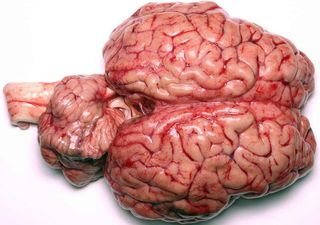
Why Is Gray Matter Gray?

The stuff between our ears comes in two shades: white and grey. The difference between the two is all in the fat content.
The white matter of the brain is made up primarily of axon tracts, the long, spindly appendages of some brain cells. These tracts transmit the electrical signals that the brain cells, called neurons, use to communicate. They're wrapped in a fatty layer called myelin, which insulates the axons and allows them to conduct signals quickly, much like rubber insulation does for electrical wires. The type of fat in myelin makes it look white, so myelin-dense white matter takes on a white hue as well.
In contrast, gray matter is mostly neuron cell bodies and non-neuron brain cells called glial cells. These glial cells provide nutrients and energy to neurons. They help transport glucose into the brain, clean the brain of excess chemicals and may even affect the intensity of the neurons' communications.
Because these cells are not surrounded by white myelin, they take on the natural grayish color of the neurons and glial cells. In a living person, it actually looks pinkish-brown, because it has so many tiny blood vessels called capillaries.
White matter is buried deep in the brain, while gray matter is mostly found on the brain's surface, or cortex. The spinal cord, which transmits nerve impulses to and from the rest of the body, has the opposite arrangement: gray matter at its core with insulating white matter on the outside.
- Do We Really Only Use 10 Percent of Our Brains?
- Do Neuroenhancing Drugs Really Work?
- Why Does Ice Cream Cause Brain Freeze?
Sign up for the Live Science daily newsletter now
Get the world’s most fascinating discoveries delivered straight to your inbox.

Stephanie Pappas is a contributing writer for Live Science, covering topics ranging from geoscience to archaeology to the human brain and behavior. She was previously a senior writer for Live Science but is now a freelancer based in Denver, Colorado, and regularly contributes to Scientific American and The Monitor, the monthly magazine of the American Psychological Association. Stephanie received a bachelor's degree in psychology from the University of South Carolina and a graduate certificate in science communication from the University of California, Santa Cruz.
Most Popular


